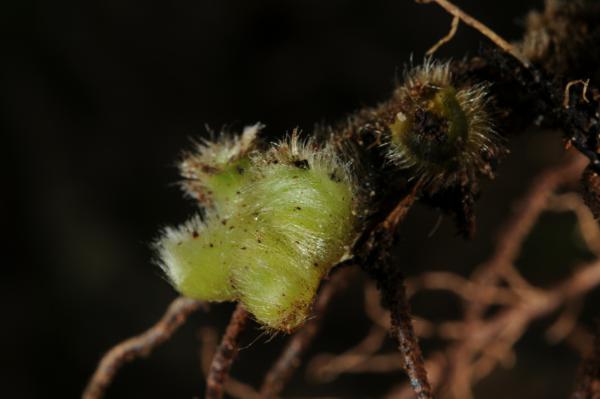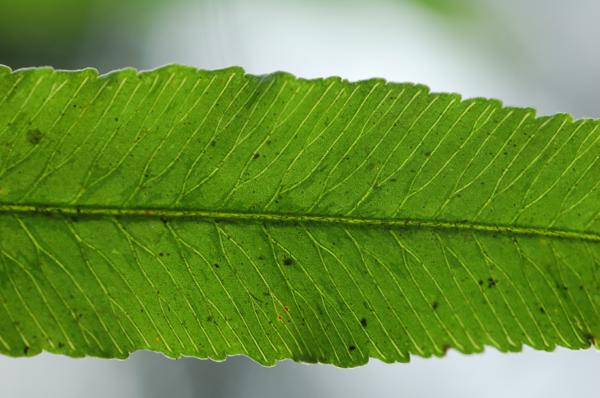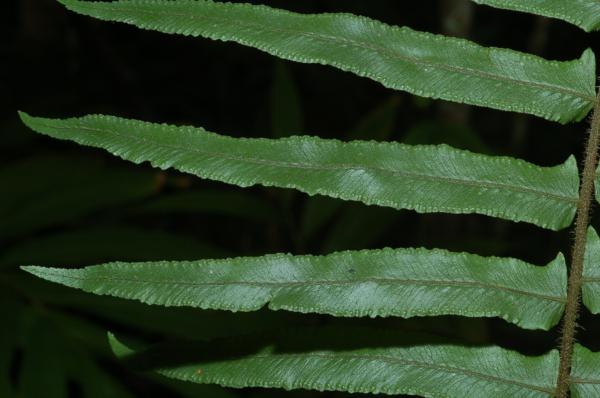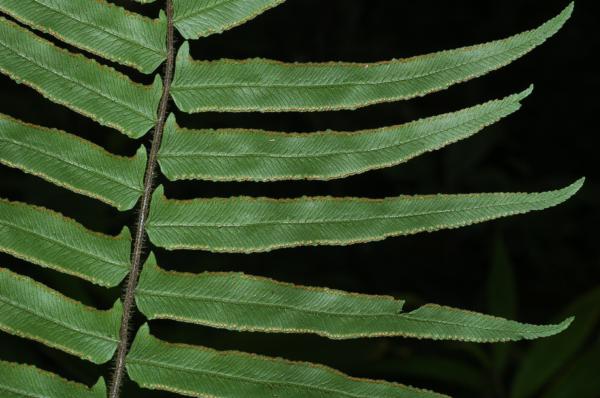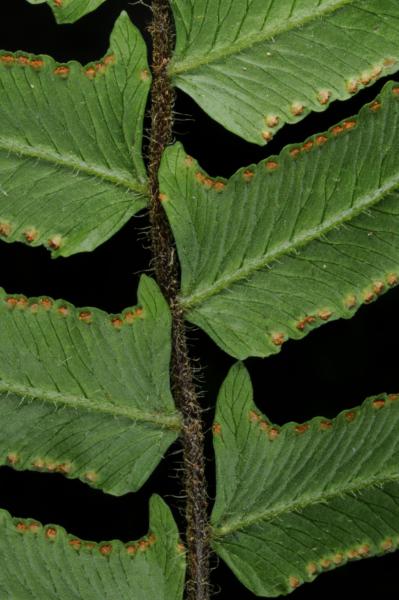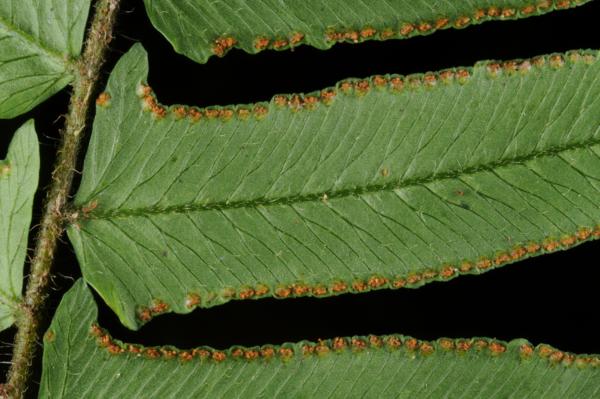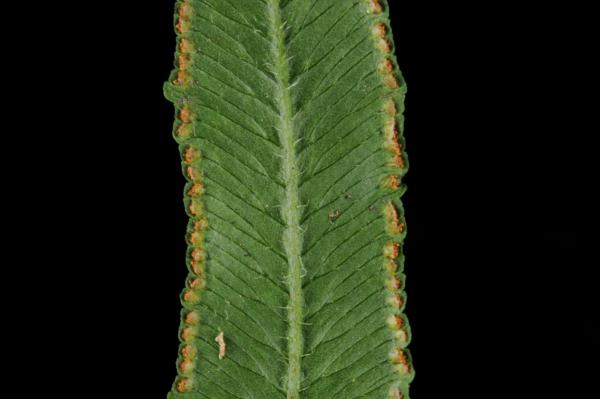
Microlepia hookeriana (Wall. ex Hook.) C.Presl
Family
Dennstaedtiaceae
Nomenclature
Microlepia hookeriana (Wall. ex Hook.) C.Presl, Epimel. Bot.: 95. 1851 [‘1849’]; Bedd., Handb. Ferns Brit. India: 62, f. 32. 1883; Tardieu & C.Chr., Fl. Indo-Chine 7(2): 93. 1939; Ching, Fl. Reipubl. Popularis Sin. 2: 211, pl. 19, f. 1–5. 1959; Holttum, Dansk Bot. Ark. 20: 24. 1961; Tagawa & K.Iwats., SouthE. Asian Stud. 5: 71. 1967; Tagawa & K.Iwats., Fl. Thailand 3: 113, f. 7.1 & 7.2. 1979; Boonkerd & Pollawatn, Pterid. Thailand: 87. 2000. – Davallia hookeriana Wall. ex Hook., Sp. Fil. 1: 172, t. 47B. 1846. – Scyphularia hookeriana (Wall. ex Hook.) J.Sm., Hist. Fil.: 261. 1875; Tagawa, J. Jap. Bot. 26: 187. 1951.
Description
Rhizome long creeping, densely covered with setose bright brown hairs about 2 mm long, 3.5–5 mm diam. Stipes 2–5 cm apart, erect, 12–20 cm long, stramineous or darker, densely covered with hairs like those on rhizome but shorter, more or less grooved on the upper surface; lamina pinnate, gradually narrowing towards acuminate apex, narrowly oblong, up to 50 cm long, 15 cm wide; rachis like the upper parts of stipes, distinctly grooved on the upper surface and densely hairy throughout; lateral pinnae usually more than 25 in pairs, close except for a few lower ones which are somewhat shorter, remote and deflexed, all sessile, linear, slightly falcate, gradually narrowing towards acute apex, serrate at margin, broadly cuneate posteriorly and auricled anteriorly at base, the largest 12 cm long, 1.3 cm broad; terminal pinnae distinct, gradually narrowing upwards, up to 15 cm long; herbaceous, deep green, veins once forked, hairy on veins beneath and on both surfaces of costa. Sori terminal on veinlets, at margin of pinnae; indusia cup-shaped, less than 1 mm broad, 0.5 mm long, glabrous .
Distribution in Thailand
NORTHERN: Chiang Rai, Phitsanulok; NORTH-EASTERN: Loei; EASTERN: Nakhon Ratchasima; CENTRAL: Nakhon Nayok; SOUTH-EASTERN: Chanthaburi; PENINSULAR: Phangnga, Nakhon Si Thammarat.
Wider Distribution
E Himalaya and Upper Burma to S China, northern Vietnam, Taiwan and Ryukyus, southwards to Borneo, Sumatra and Java.
Ecology
On rather dry ground in shade or sandy ground along streams in tropical evergreen forest at 700–1200 m alt.
Proposed IUCN Conservation Assessment
Least Concern (LC). This species is widespread and not under any known threat.
Notes
This species is distinct from other members of Microlepia in its pinnate fronds with shallowly incised subsessile pinnae whose bases are auricled acroscopically or sometimes basiscopically as well, in distinct apical pinnae, in parallel veins forked at least twice.
Voucher specimens - Thailand
Middleton et al. 5085, Phitsanulok, Phu Hin Rong Kla National Park (E).
Habit
Rhizome
Growing tip of rhizome
Venation
Pinnae from above
Pinnae from beneath
Rachis and bases of pinnae
Base of pinna
Lower surface of pinna and sori
Site hosted by the Royal Botanic Garden Edinburgh. Content managed by Stuart Lindsay, Gardens by the Bay, Singapore and David Middleton, Singapore Botanic Gardens. Last updated 24 January 2012
_TP_9975_sml.JPG)
_Middleton_et_al_5085_TP_9753_sml.JPG)
